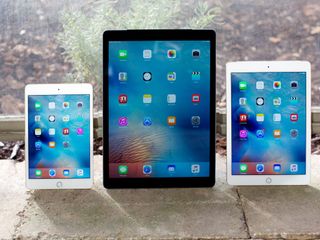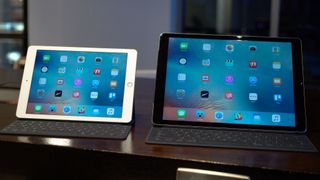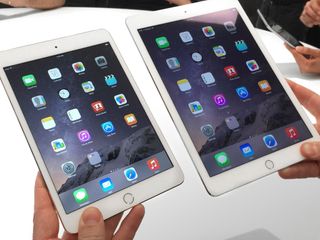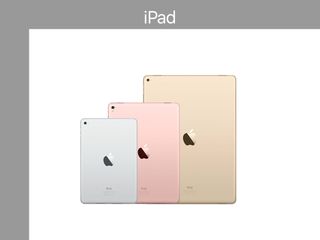Simplifying the iPad product line

iPad now is nowhere nearly as impenetrable as Mac then, yet it's no longer simple either. Steve Jobs originally introduced Apple's tablet as a window into apps and the web that had to fight for its right to exist in between iPhone and Mac. Then it got lighter and even smaller. At the same time iPhone got bigger and the Mac lighter. Now iPad has gone Pro, and in so doing finds itself spread across three brands, three sizes, and three generations.
- 12.9 inch iPad Pro (A9).
- 9.7 inch iPad Pro (A9) and iPad Air 2 (A8).
- 7.9 inch iPad mini 4 (A8) and iPad mini 2 (A7).
Could Tim Cook's Apple do now what Steve Jobs did then? Could Apple make iPad simple and understandable again?

Every time I walk down the isle of an airplane, I see men and women, young and old, business travelers and vacationers, using iPads. Some big, some small. Some working on keyboards, others watching movies. Some reading, others gaming. Many transitioning easily from one to the other and back. Same with coffee shops. Same with family rooms. Same with waiting rooms. Same with... almost anywhere.
The complexity isn't in the utility, it's in navigating the original purchasing decision. In that regard, when you get right down to it, there's really only two iPads to consider:
- Pro, with support for Smart Connector and Apple Pencil
- Non-pro, without such support.
Apple could, if the company chose, field iPads in all three sizes, with and without Connector and Pencil support. Apple could also, eventually, keep older generation versions of any iPad available to provide lower, more entry-level price points. Those are details and don't affect the bigger picture.

Consumer and professional, small and big. Don't obsess over the names, though. They could be anything. Apple currently has Pro, Air, and mini in the Mac line, but they seem ready to deprecate Air for the simpler, suffix-less Macbook. Taking a cue from that, how about iPad Pro and iPad?
iPad Pro, regardless of size, has the Smart Connector and Apple Pencil, and whatever other advanced technologies Apple introduces as the higher end. iPad, regardless of size, doesn't.
Master your iPhone in minutes
iMore offers spot-on advice and guidance from our team of experts, with decades of Apple device experience to lean on. Learn more with iMore!

Apple could stick with two sizes per category or go to three. It doesn't really matter. The tradeoff is portability vs. productivity, each enabled by its relative size.
If Apple wants to keep previous generations around to keep the cost of entry low, that does threaten complexity again. Even that could be managed, though, by an over-arching brand for just such entry-level devices. Similar to what Apple just did with iPhone SE, adding a letter or two avoids model numbers aging out and allows them to subsist on the market for as long as needed.
There would still be different colors and capacities, but so what? Macs persisted — and persist — with different storage sizes, memory sizes, processor speeds, and colors. Before, during, and after they were "grid'ed". To most people, post-purchase, it's simply their Mac.
In that light, even the above grid is likely too much. In the not-so-distant future, it's easy to see all iPads having Smart Connector and Pencil support, and people can simply choose if or when they want to buy the ad-ons.
In that future, the Pro distinction falls way as well, no longer supported by product or brand. And the bigger picture gets even simpler.

So does the story: iPad is your window into apps and the web, and you can get as much or as little of it as you want.

Rene Ritchie is one of the most respected Apple analysts in the business, reaching a combined audience of over 40 million readers a month. His YouTube channel, Vector, has over 90 thousand subscribers and 14 million views and his podcasts, including Debug, have been downloaded over 20 million times. He also regularly co-hosts MacBreak Weekly for the TWiT network and co-hosted CES Live! and Talk Mobile. Based in Montreal, Rene is a former director of product marketing, web developer, and graphic designer. He's authored several books and appeared on numerous television and radio segments to discuss Apple and the technology industry. When not working, he likes to cook, grapple, and spend time with his friends and family.